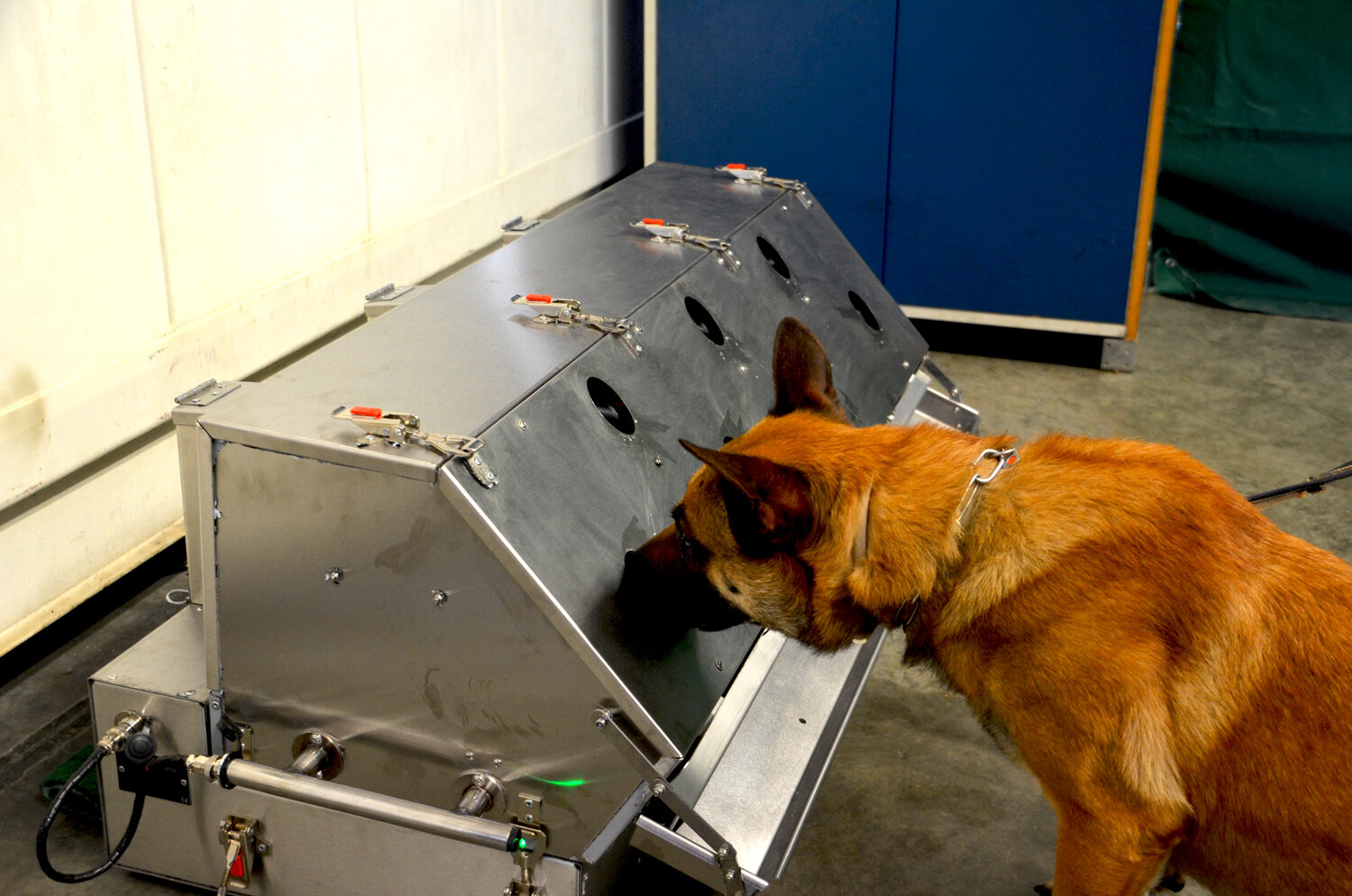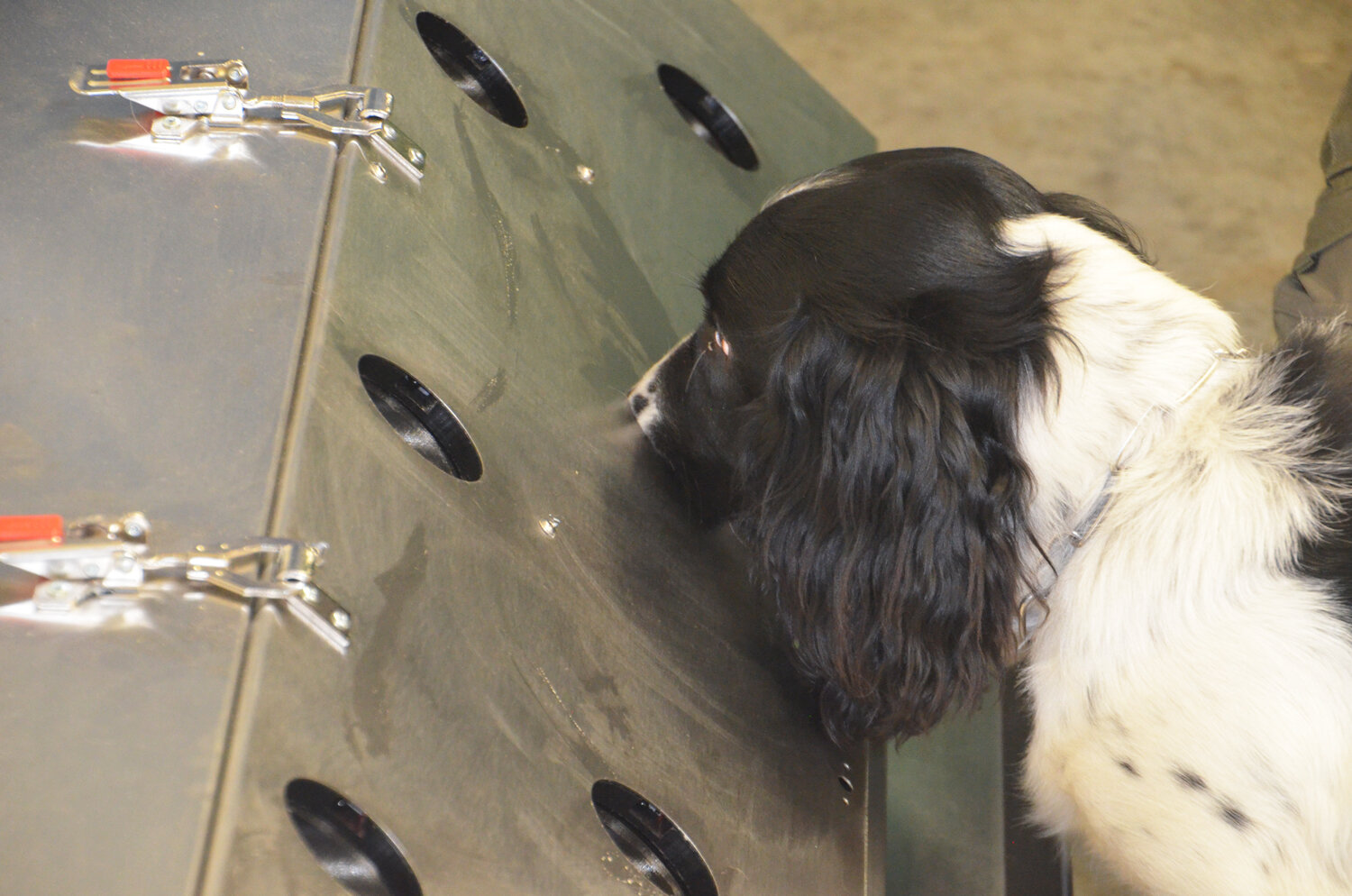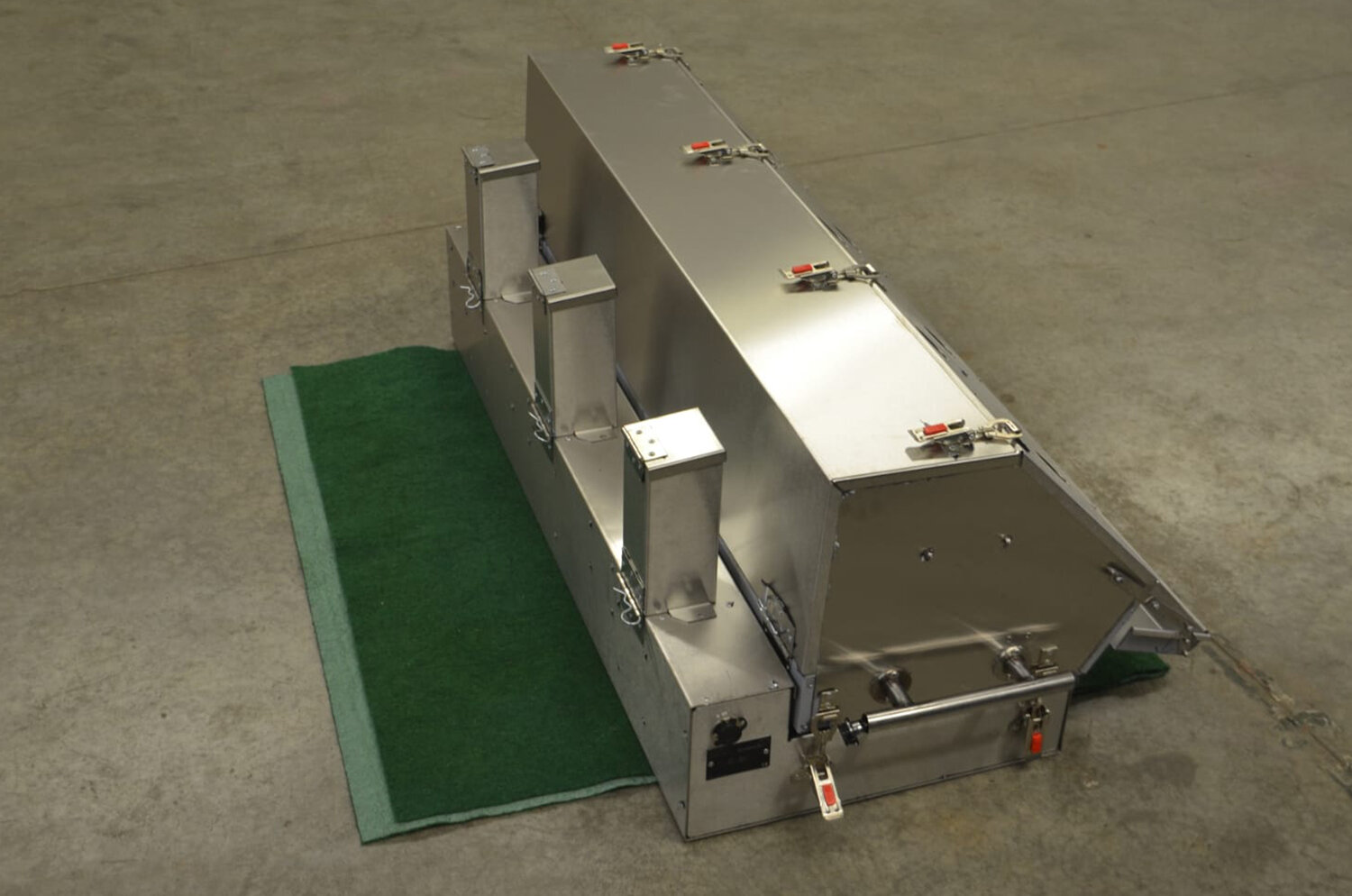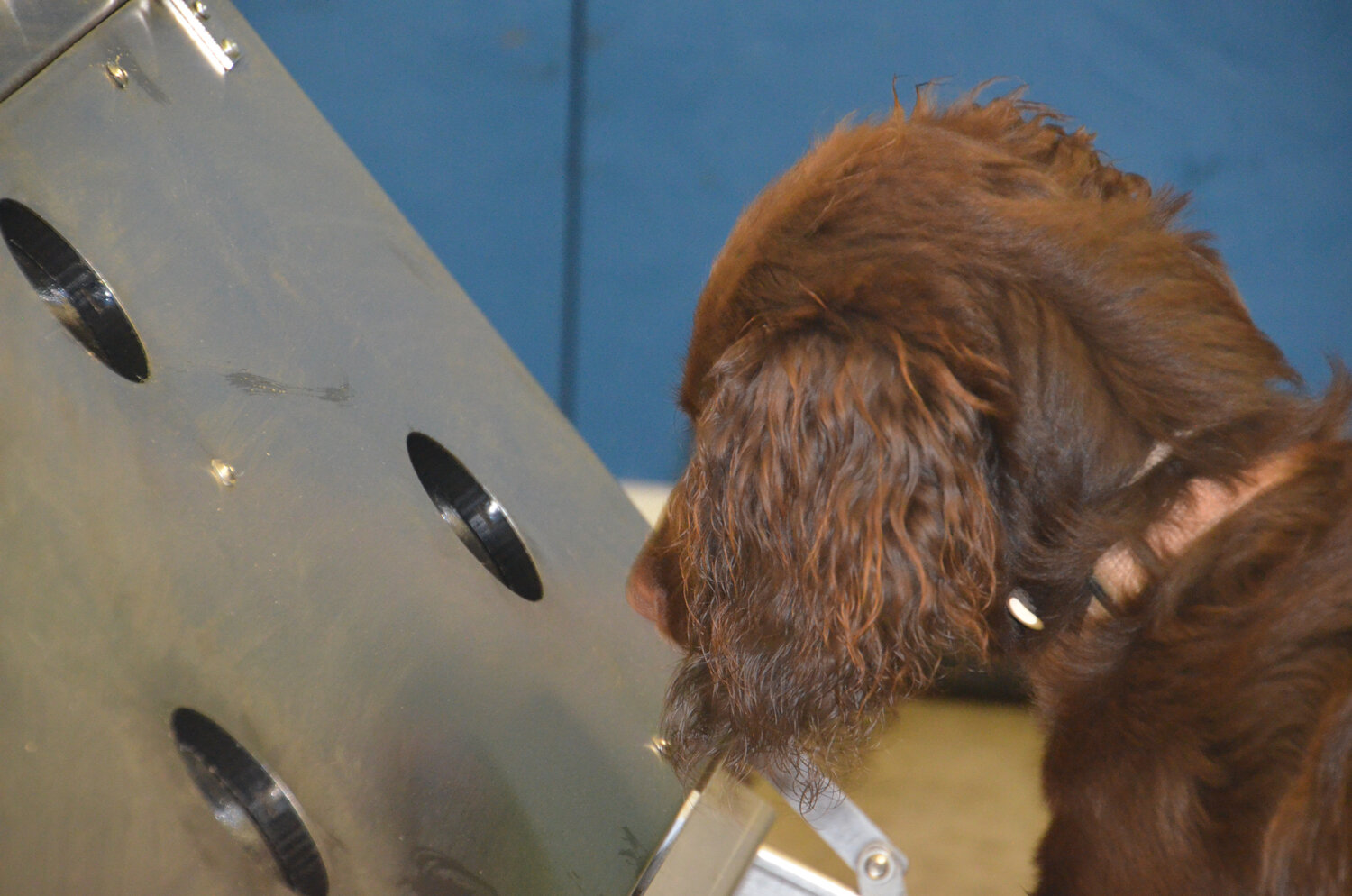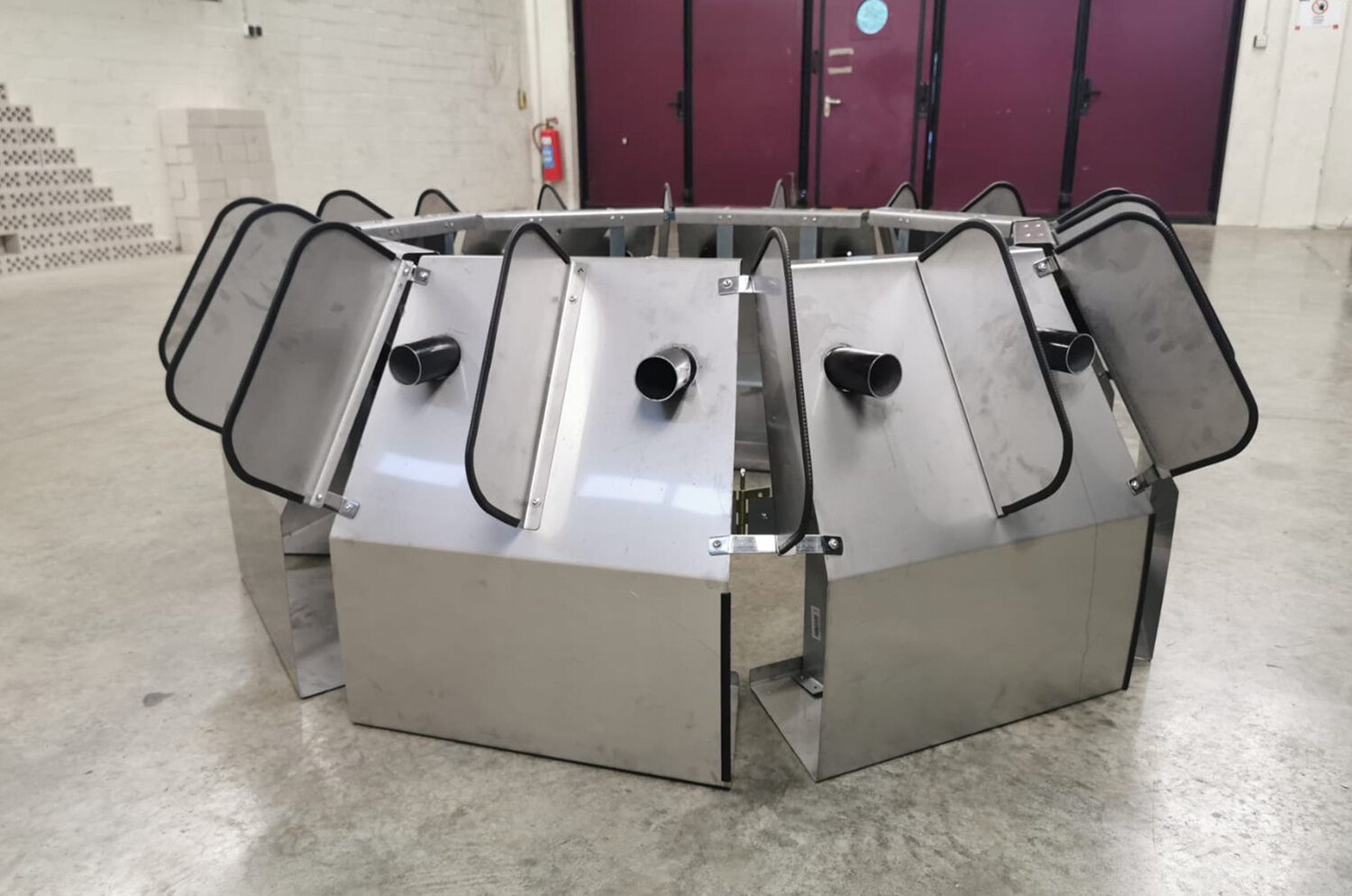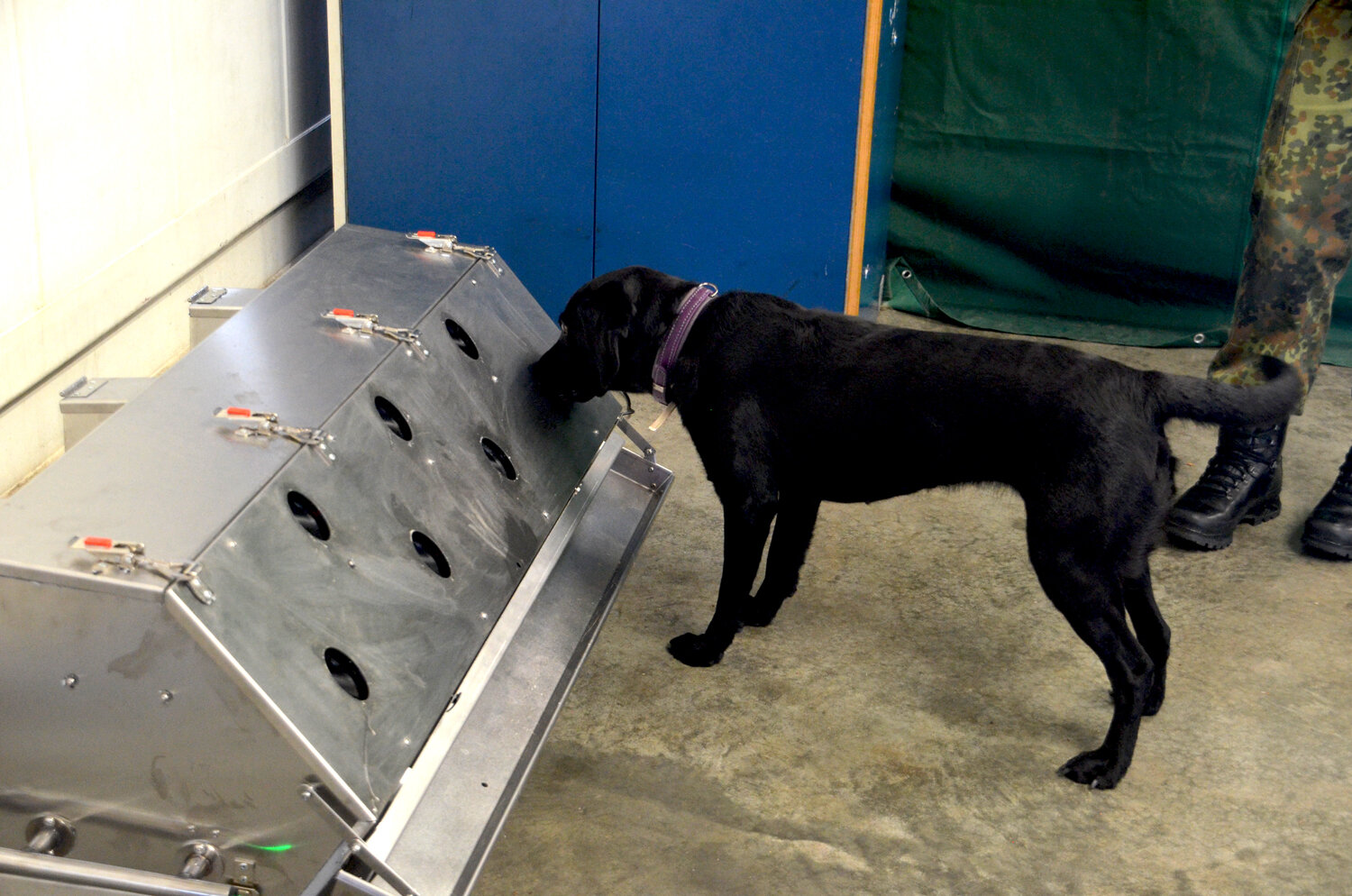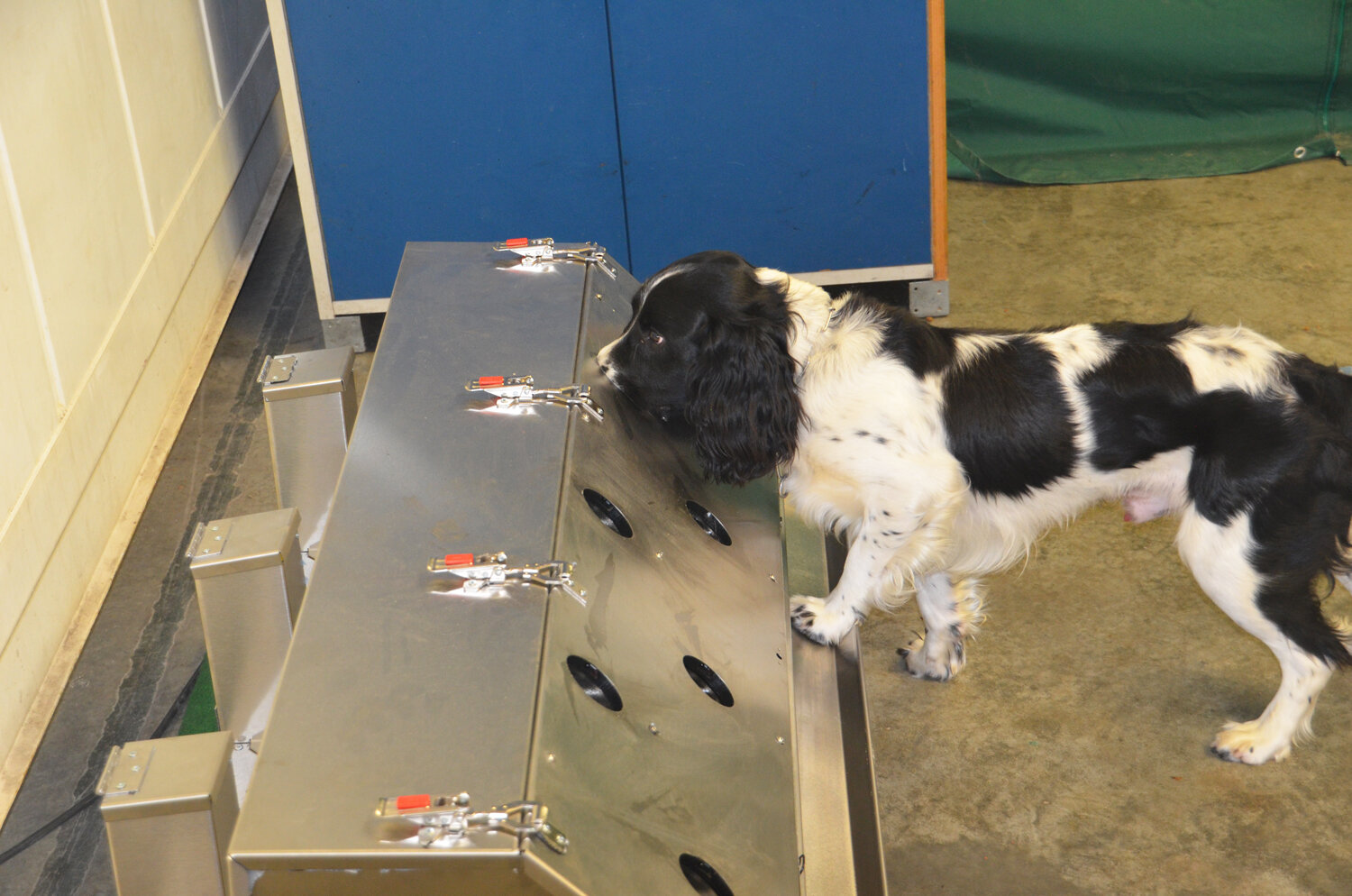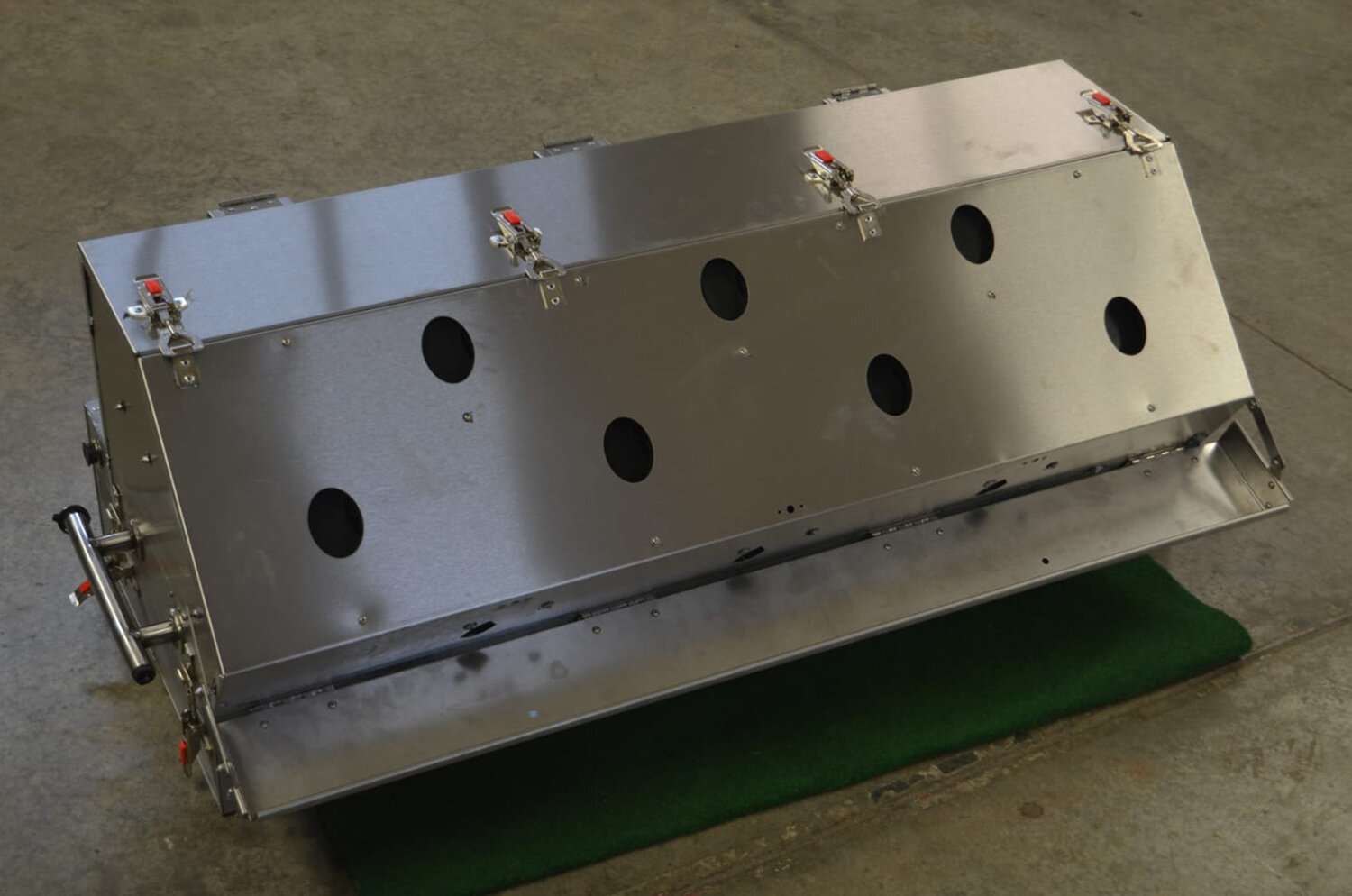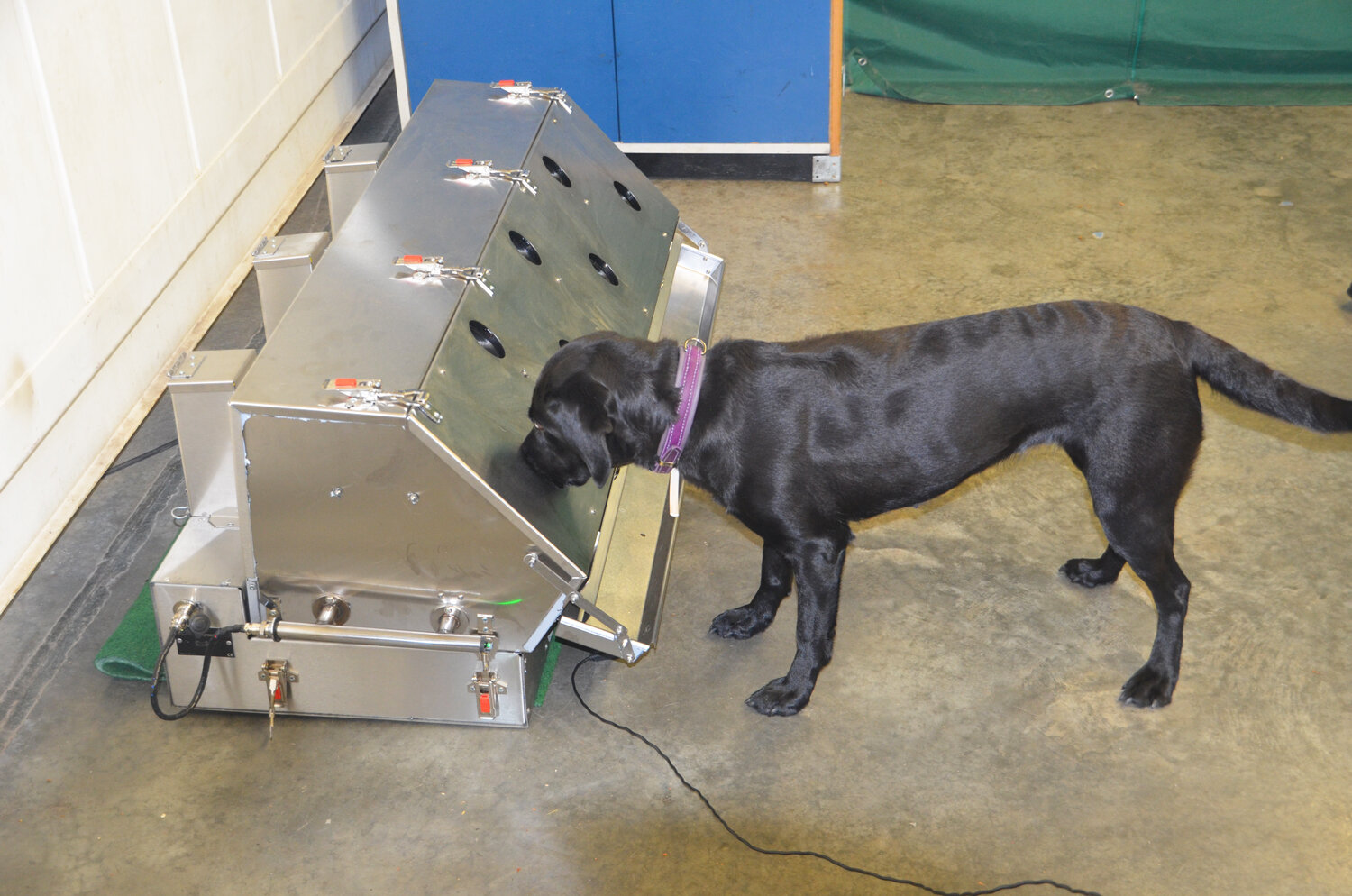The detection dog training system (DDTS)
A new standard for scent conditioning of detection dogs
The DDTS we developed is an electronic design for training dogs in scent inprinting, scent differentiation and scent indication.
It can be used for the training on various odorous substances from the service sector such as explosives and drugs, the medical sector such as bacteria or viruses, but also for training on protected animals.
The DDTS enables structured training and research without the influence of the dog handler. The dog can work on the odorous substances without the human factor influencing the result. This is a major source of error in conventional training methods, which is greatly minimised by DDTS.
